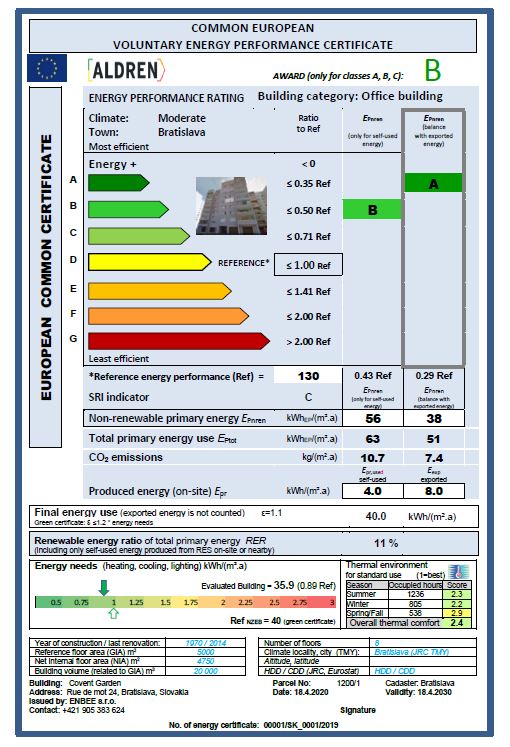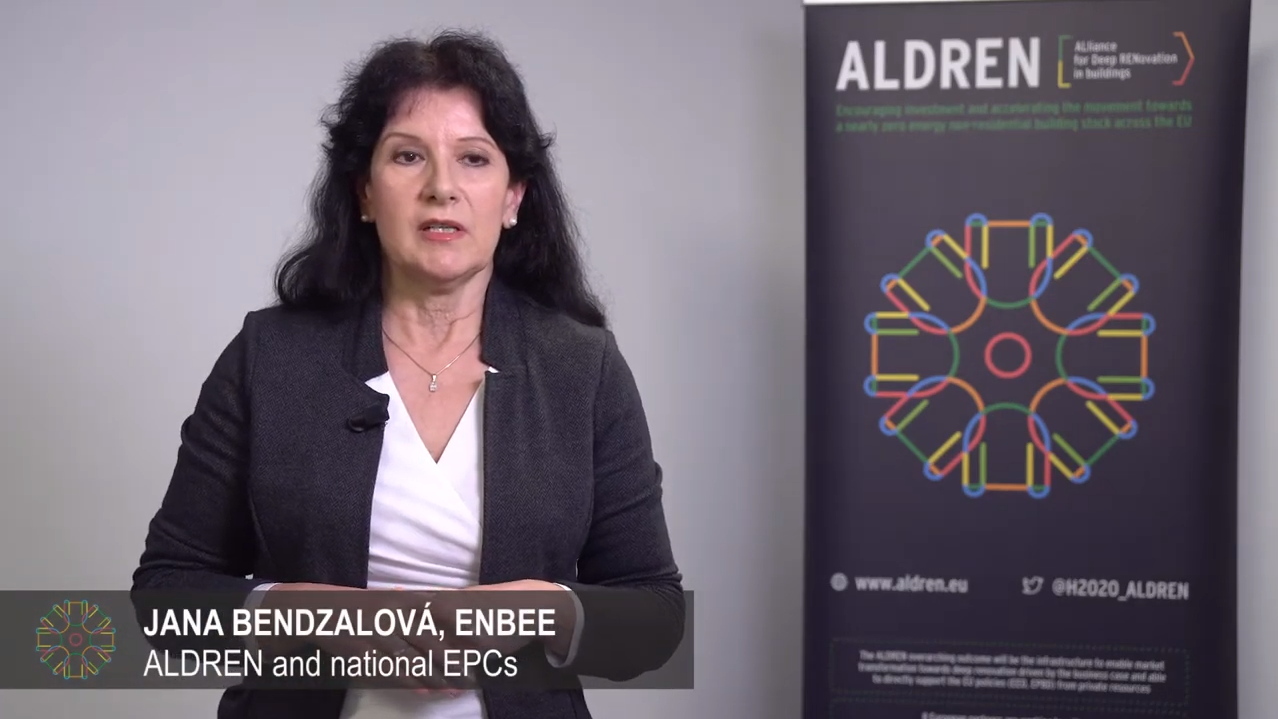EUROPEAN VOLUNTARY CERTIFICATE (EVC)

The EVC provides a synthesis of a building’s energy performance and a summary of the main renovation actions to be undertaken. The EVC is ALDREN’s back-bone that supports the implementation of a European Voluntary Certification Scheme (EVCS) introduced in Article 11(9) of the EPBD.
The EVC+ is the EVC with the addition of several sections to describe the actual (measured) energy performance, IEQ (TAIL-index about health & well-being) and to analyse the impacts of proposed energy renovation actions on financial value.
The ALDREN energy rating and targets aim to provide in the ALDREN European common certificate (ALDREN EVC) a transparent and comparable metric and more accurate results closer to the actual energy consumption. The ALDREN EVC is compatible with the EPBD requirements on the energy performance certificate. The reliability of the ALDREN approach is based on the following key components:
- Harmonized and transparent calculation methodology based on the new European standards developed under the Commission Mandate M/480, that provides the results closer to the actual consumption using the hourly calculation step, the climate conditions of building location, the real performance of systems and envelope. The national standard use and occupancy schedule, assumed as conditions for calculation, represent the average building exploitation during a longer period (e.g. 15-20 years) considered for global cost and discounted cash flow (DCF) calculation for renovation options;
- Two main common indicators for the benchmark on the common scale based on the non-renewable primary energy use either (a) with only the self-used PV electricity produced on-site taken into account or (b) including also the export to the grid (the main energy performance indicator);
- The additional numerical indicators including a “hurdle race” towards the Nearly Zero Energy Building (NZEB) for the “green” ALDREN certificate because to achieve an energy class “A” is not sufficient for ALDREN NZEB level. The indicators were aligned with the existing schemes (BREEAM, DGNB, HQE, IVE-BES) and with the recommendations in Level(s);
- Link of reported energy performance with the thermal comfort score based on the operative temperature obtained from the hourly energy simulation;
- Possibility for calibration of calculation model using the measured energy (actual and calculated heating power based on EN 15378-3[6]);
- A common content and template of European certificate reporting all indicators together with the recommendations for improvement of energy performance towards the NZEB with the link to more detailed ALDREN Building Renovation Passport (BRP).

The position of ALDREN EVC
The ALDREN EVC is not to be considered as a competing instrument with the national mandatory EPCs. The two are complementary; both have an important role to play in the climate policy framework. The national mandatory EPCs provide comparison of building energy performance against the national building stock and the cost optimality has to be taken into account. The price for issuing the mandatory energy performance certificate is also an important issue.
The position of the ALDREN EVC is different as it aims to trigger investment in deep renovation in non-residential buildings. Indeed, a higher ambition level is required for financial support and a more accurate prediction of energy performance is needed for building owner for his decision making process towards the deep renovation. The ALDREN EVC may illustrate a potential pathway for national EPCs evolution towards reinforced performance request.
The ALDREN Common European voluntary certificate:
- Can stand alone or can be taken over at the EU, national or commercial level (e.g. by banks) for some purposes (e.g. for financial instruments);
- Can be integrated in other existing voluntary commercial certification schemes as an energy module (e.g. BREEAM, DGNB, IVE, HQE);
- Can complement the national EPCs for some cases (e.g. for subsidies).
ALDREN PROJECT

© ALDREN. All rights reserved. Any duplication or use of objects such as diagrams in other electronic or printed publications is not permitted without the author’s agreement.
Read our LEGAL NOTICE – PRIVACY POLICY – COOKIE POLICY.




